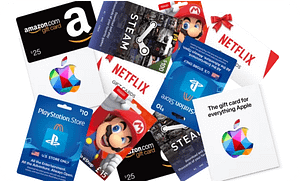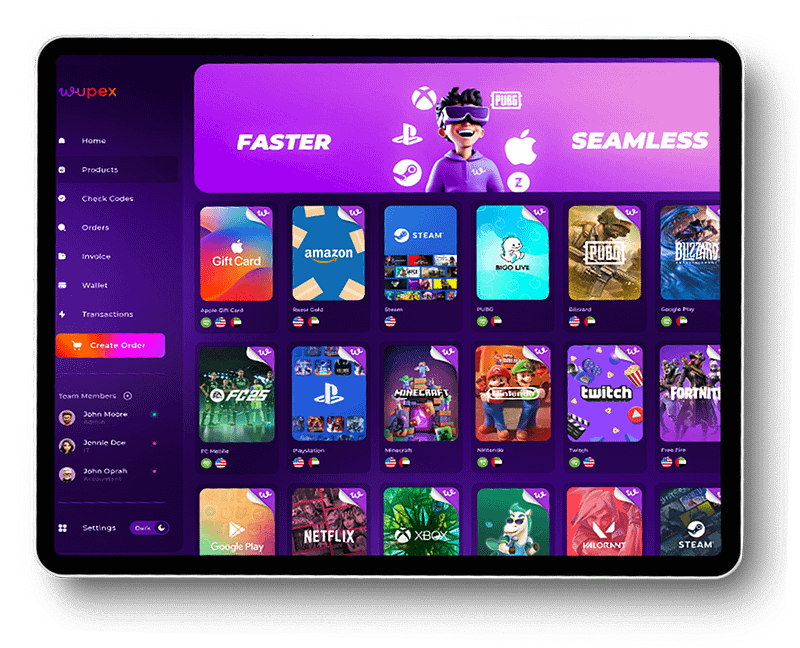
Gift card reward programs have transformed from simple plastic cards into powerful business drivers for retailers worldwide. According to recent industry data, the global gift card market is expected to reach $1.4 trillion by 2025, growing at an impressive annual rate of 15% since 2023.
Despite this growth, many retailers still underutilize these valuable tools. Beyond traditional plastic options, digital gift cards from major platforms like Amazon, Apple, and Google Play now account for over 65% of all gift card sales. Furthermore, retailers who effectively implement these programs see customer retention rates improve by up to 40%.
Throughout this guide, we’ll explore how modern gift card systems are evolving in 2025, why they’re essential for customer loyalty, and how integration with digital wallets is becoming standard practice. Additionally, we’ll examine personalization strategies and the analytics that power successful programs. Whether you’re considering launching your first gift card program or looking to enhance your existing system, this comprehensive resource will provide the insights you need to succeed in today’s competitive retail landscape.
The evolution of gift card reward programs in 2025
In 2025, gift card reward programs have evolved remarkably from their humble beginnings as paper vouchers and plastic cards into sophisticated business tools with strategic significance. This transformation represents a fundamental shift in how retailers view and utilize these programs in their overall business strategy.
From simple gifts to strategic tools
The journey of gift cards has been dramatic – moving beyond simple plastic tokens to become vital components in managing economic pressures felt by both consumers and retailers. In an era marked by rising inflation, with 97% of consumers concerned about the cost of living, gift cards now serve as practical solutions for budget management rather than mere gifting options.
Moreover, the format of these cards has evolved significantly. While physical cards still exist, digital gift cards have gained tremendous popularity, aligning with broader trends in eCommerce and mobile payments. This shift comes as no surprise, given consumers’ increasing demand for fast, convenient, and seamless experiences. Digital cards can now be delivered instantly via email, text, or social media, eliminating traditional distribution challenges.
Notably, the evolution includes integration with mobile wallets like Apple Pay and Google Wallet, allowing customers to store and access their gift cards through smartphones. This technological advancement has addressed previous limitations, such as cards being lost or stolen, while making them more secure and eco-friendly
Why retailers are investing more in gift card systems
The financial potential of gift card programs presents a compelling case for increased retailer investment. The global gift card market, valued at USD 899.30 billion in 2021, is projected to reach an astounding USD 2.30 trillion by 2030. Consequently, retailers view these programs as reliable revenue sources amid fluctuating consumer spending patterns.
In fact, consumer behavior with gift cards offers multiple advantages to retailers:
- 61% of shoppers tend to spend more than the gift card’s value, averaging an additional USD 31.75 per transaction.
- Consumers are 2.5 times more likely to pay full price when using gift cards.
- The average proportion of monthly gift card buyers increased to 52.3% in 2022 compared to 49.1% in 2021, showing growth despite economic challenges.
As a result, gift cards provide immediate cash flow benefits, as retailers receive payment upfront for services not yet rendered. This creates a form of deferred revenue that improves liquidity while being recorded as a liability until redemption.
Beyond financial benefits, these programs serve as powerful customer acquisition tools. When someone receives a Mastercard gift card or brand-specific digital gift card, they’re essentially being introduced to a business they might not have patronized otherwise. This introduction often leads to repeat business, especially considering that recipients frequently return to spend more than the card’s value.
The corporate gifting market has also contributed to this evolution. Employee rewards, customer loyalty programs, and business-to-business gifting have expanded the applications of gift card systems beyond consumer retail. This corporate segment now drives much of the growth in the gift card industry, with digital gift cards seeing a 17.1% year-over-year adoption rate.
To maximize these benefits, retailers are increasingly focusing on personalization options for their gift card programs. Customization features such as personalized messages, design options, and flexible delivery methods create stronger emotional connections with customers while differentiating offerings in a competitive market.
How gift cards enhance customer loyalty
Beyond their transactional value, gift cards serve as powerful tools for building lasting customer relationships. The psychology behind gift cards reveals why they’re increasingly central to modern loyalty strategies.
Emotional value and perceived appreciation
Gift cards tap into profound emotional territories that go well beyond their monetary worth. Unlike discounts or coupons, gift cards create a sense of trust and appreciation that resonates with recipients. When customers receive gift cards as rewards, they experience a tangible token of recognition that makes them feel genuinely valued.
This emotional connection isn’t merely subjective—it’s backed by research showing that 90% of consumers report feeling appreciated when offered a gift card as a reward. This appreciation transforms into brand affinity that cash incentives simply can’t match.
Initially, many retailers mistakenly viewed gift cards as impersonal. In reality, they convey profound thoughtfulness by entrusting recipients with the freedom to curate their own happiness. This perceived value generates positive associations that extend far beyond the transaction itself.
Integrating gift cards with digital wallets and apps
Digital wallets have become essential connectors between gift cards and the modern shopping experience. In 2025, the integration of gift cards with mobile platforms represents a critical advancement for retailers seeking to maximize their reward program effectiveness.
Why digital wallets matter in 2025
The digital wallet revolution has reached a tipping point, with global digital wallet sales projected to exceed USD 10 trillion by 2025—an impressive 83% increase over 2020 figures. Currently, digital wallets account for 53% of online purchases globally, highlighting their mainstream adoption.
For gift card programs specifically, mobile wallet integration solves a persistent problem: unredeemed cards forgotten in drawers. By allowing physical cards to be added to Apple Wallet or Google Wallet, retailers help consumers keep their gift cards accessible and top-of-mind. Indeed, this accessibility drives usage—push notifications can remind users to spend remaining balances, substantially increasing redemption rates.
Top features consumers expect
Consumers have clear preferences regarding digital wallet functionality. According to recent research, the most desired features include:
- Ease of use (65%)
- Security (59%)
- Ability to store multiple cards in one place (55%)
- Rewards or cashback integration (48%)
How to link gift cards with mobile loyalty apps
Implementing effective digital wallet integration requires strategic planning. First, retailers should work with pass solution providers to create digital loyalty passes customized to reflect their program rules. These passes enable automatic point collection with each purchase while delivering personalized promotions directly to smartphones.
Retailers can facilitate adoption through various channels:
- Setting up in-store kiosks where customers can immediately add digital passes to their wallets
- Using email marketing to invite customers to join the digital program
- Offering wallet-specific incentives to encourage integration
For brands with existing mobile apps, integrating gift card functionality via SDK (Software Development Kit) provides the most streamlined experience. This approach allows for added services like cash rewards disbursement or physical rewards catalogs directly within the app environment. Among the most successful implementations are those featuring prominently displayed gift card programs on websites and in apps, simplified self-use purchase paths, and robust fraud protection measures.
Avoiding overuse and maintaining value
Though personalization drives engagement, there’s such a thing as too much. Nearly 70% of consumers believe excessive personalization exists, with over half reporting that they’ve stopped shopping with brands due to invasive technology .
Customers cite excessive push notifications and apps requesting excessive access as primary reasons for abandoning brands. Finding balance remains crucial—67% of consumers willingly share personal information with trusted brands for better rewards, yet they have clear boundaries.
Ultimately, the most successful gift card programs maintain their value by respecting these boundaries while delivering relevant, timely offerings that genuinely enhance customer experiences.
Conclusion
Gift card reward programs have transformed retail customer engagement strategies throughout 2025. These versatile tools now extend far beyond simple plastic tokens, functioning as powerful revenue drivers and loyalty builders. Additionally, the shift toward digital formats has addressed traditional limitations while making programs more accessible, secure, and environmentally friendly.
The numbers speak for themselves. Customers spend beyond card values, return more frequently, and develop stronger brand connections when gift cards feature in loyalty programs. Therefore, retailers who underutilize these tools miss significant opportunities for growth, especially as consumers increasingly expect personalized experiences.
Digital wallet integration represents perhaps the most significant advancement. This technology keeps gift cards accessible and top-of-mind rather than forgotten in drawers. Consequently, redemption rates increase while creating seamless experiences across physical and digital shopping environments.
Successful gift card strategies balance personalization with respect for customer boundaries. Though data analytics provide valuable insights for tailoring rewards, retailers must avoid crossing into intrusive territory. After all, customer trust remains the foundation of any effective loyalty program.
The gift card landscape has clearly evolved into a sophisticated ecosystem that benefits both retailers and consumers. Businesses implementing thoughtful, technology-driven gift card programs can expect stronger customer relationships, increased spending, and valuable data insights. Meanwhile, consumers gain convenient, personalized experiences that make them feel genuinely appreciated. This mutual benefit explains why gift card programs will continue driving retail success well beyond 2025







